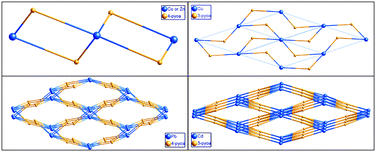Flexible and versatile anionic modules in the direction of 1-D, 2-D, and 3-D coordination frameworks by metal–ligand synergistic interactions†
Abstract
This work presents the structural assemblies of a series of coordination

* Corresponding authors
a
College of Chemistry and Life Science, Tianjin Normal University, Tianjin, P. R. China
E-mail:
dumiao@public.tpt.tj.cn
Fax: +86-22-23766556
Tel: +86-22-23540241
This work presents the structural assemblies of a series of coordination

 Please wait while we load your content...
Something went wrong. Try again?
Please wait while we load your content...
Something went wrong. Try again?
Z. Zhang and M. Du, CrystEngComm, 2008, 10, 1350 DOI: 10.1039/B803736A
To request permission to reproduce material from this article, please go to the Copyright Clearance Center request page.
If you are an author contributing to an RSC publication, you do not need to request permission provided correct acknowledgement is given.
If you are the author of this article, you do not need to request permission to reproduce figures and diagrams provided correct acknowledgement is given. If you want to reproduce the whole article in a third-party publication (excluding your thesis/dissertation for which permission is not required) please go to the Copyright Clearance Center request page.
Read more about how to correctly acknowledge RSC content.
 Fetching data from CrossRef.
Fetching data from CrossRef.
This may take some time to load.
Loading related content
